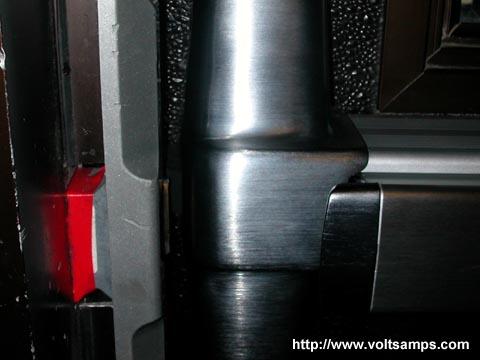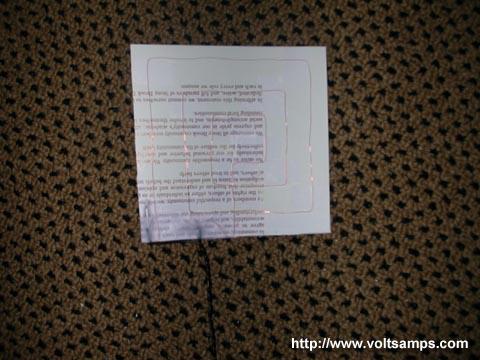 .:: Insecure RF ID Doors ::. .:: Insecure RF ID Doors ::.
|
Disclaimer: The information provided here is for educational purposes only for those who design security systems and set up entry authentication systems. I am in no way, shape or form encouraging breaking and entering. Do not try this unless you live in the building or have valid permission to do so.
RF ID is the current modern and secure method for authentication at doorways for limiting user access to buildings of all types. Suppose you are a college student and are given an ID card. Most likely new schools will provide a student ID card with a built-in RF ID wire loop which will allow you to enter your dorm building and only that building, while restricting access to other buildings and facilities. The system is also able to log the time and date that a user has opened a door to enter. The system is rather secure however the weakness lies within the weakest point. Many doors that are equipped with RF ID have an electronic latch mechanism which opens when an RF ID card is placed in proximity of the RF ID pad. This is a problem however because exiting would require some kind of method for opening the same latch as well. The solution that was used by my university and many others was to install a motion detector inside to detect people walking up to the door. This also activates the latch mechanism and allows the door to open. This is where the system weakness lies. Because the RF ID system is very secure I decided that the motion detector was the weakest link and looked for a way to trigger it from outside. I knew that the detector sensors only "saw" low infrared that is produced by body heat and that such a low infrared would not pass through the glass window on the door. Another idea was to trigger the motion detector with a HERF device however such a device would be somewhat bulky and would need a large power supply, it is still however a decent method. The best solution I found was quite interesting. It involved a loop of wire on a sheet of thin plastic to be slid under the door. A current would flow through it, heating it to infrared emitting temperatures. The device would then be waved from side to side setting off the motion detector. The idea seems simple but took some thinking to come up with. I went out and gave it a shot in my dorm building and just as I suspected it worked like a charm. This is proof that the current system used is ineffective to a technologically inclined person, and should be should be upgraded if security is what the system is supposed to provide.
![dscn2512.jpg]()
This is the side entrance to my dorm building which uses RF ID as authentication for entry.

You can see the motion detector mounted right above the door on the interior side of the building.

There is significant space under the door to slide objects under it up to a thickness of 2mm.

The red object is an electromagnetic latch which unlocks the door when the motion detector is triggered.

This is the device I used to trigger the motion detector. It is a spiral coil of thin high AWG wire which heats up easily with reletively low currents passing through. I used a spiral pattern to create a large uniform heated area that can easily be "seen" by the motion detector.
|
 |
|



